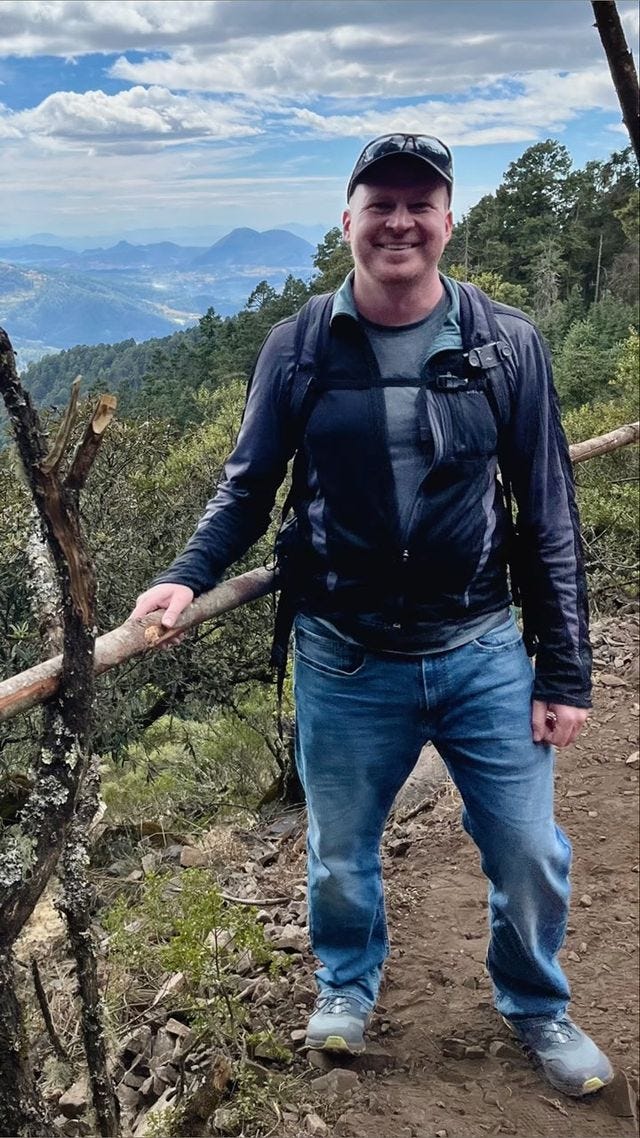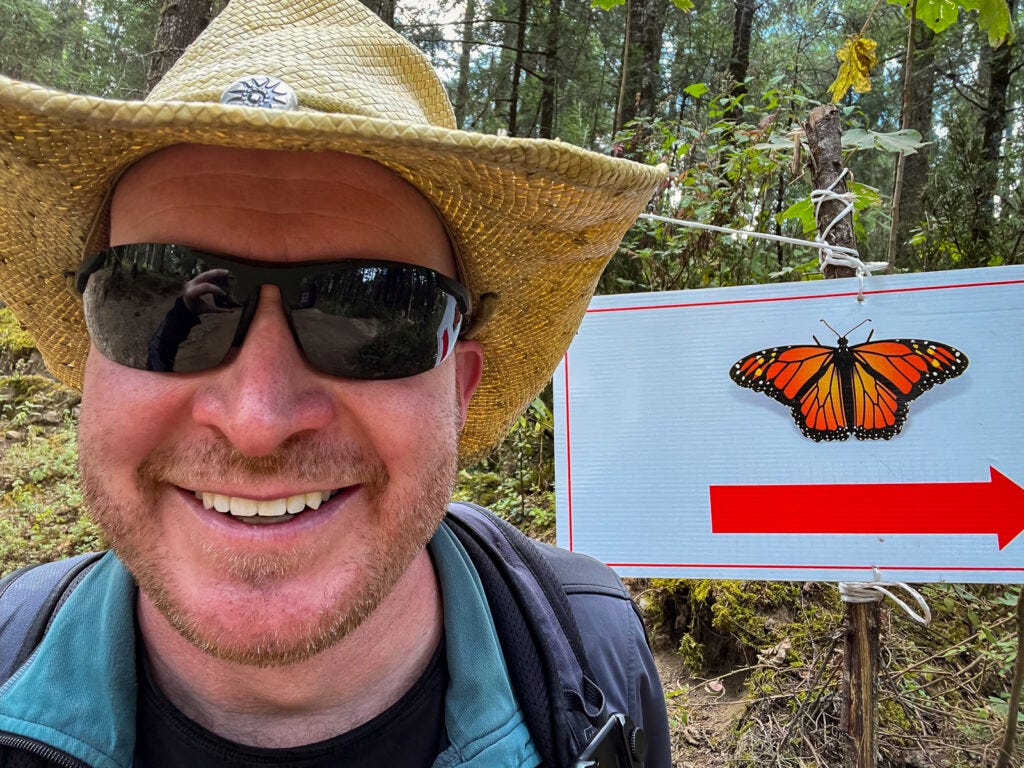Reserva de la Biósfera Mariposa Monarca
What if I told you that there is a magical forest in central Mexico where millions of monarch butterflies migrate to from North America every cold season? What if I said that when the sun reaches the trees each morning, you can see them wake up and fly down the mountainside by the thousands? Would you believe me if I told you such a place exists in the highlands of Michoacán? Because it does. It is the famous Reserva de la Biósfera Mariposa Monarca, an enchanting forested sanctuary where legions of butterflies look to escape the cold winters of the north each year.
They converge around eight colonies throughout the mountain range, two of which were in short driving distance from the centrally located pueblo of Angangueo. I reserved a hotel there on a Saturday in Mid-February during the peak season. Leaving early that morning with mi amiga Itzel, we drove south from Queretaro for three hours and reached the town at midday, optimistic and unsure of where to go. We asked around and eventually kept driving further into the mountains. Sierra Chinca, a colony eight miles further, was just ahead. Itzel drove nervously around switchbacks and steep hairpin turns, but we know that whatever was waiting for us at the top was worth it.
We parked near the trailhead and got out. The path led us through an open field and upward into the forested side of the ridge. It wasn’t a particularly hard trail, except for the fact that it was at about 10,000ft and we were both struggling to find our breath. One saddle crossing brought us to the other side with a great view of the western valley farther off. But still no butterflies. Did all the people scare them off?
Soon we reached the end of the trail and the “Quiet zone” next to the colony. Above, groups of butterflies fluttered and glided slowly among the treetops under grey skies. Other than that, there wasn’t much to see. Hoping for better luck tomorrow, we made our way back to town.
The other colony, El Rosario, is west of the town up the side of a steep ridge. The road leading us there had a great view, despite all of the potholes and scary turns without any guardrails. We drove slowly through it, hoping to get to the trail when it opened at 9. Late by 30 minutes, we wanted to beat the crowds and failed, but at least it wasn’t hot yet when we started hiking. This trail was painfully steep and the air felt even thinner than yesterday. Will I get altitude sickness before I get to see my butterflies? If that happens, I want a refund.
After about an hour of pain, the trail leveled out near the crest of the ridge. We reached the quiet zone about 100 feet away from the colony. Huge clusters of butterflies hung on the tree trunks and branches, still waking up. I read that enough of them hanging on a branch can create enough weight to break it. A crowd of about 100 people stood quietly in the main area, waiting for something big to happen.
I wasn’t sure how well the crowds would be regulated up here, but the park employees seemed to keep a good check on everybody. One them held up a sign reminding us not to talk, and the trail was roped off with signs everywhere, as to discourage the idea of people getting too close. They did well to make sure the butterflies had their space. Which is good because this park draws a lot of people in the peak season.
Soon, the morning sun broke through the treetops and started shining on the clusters of butterflies. One by one, they awakened with a flutter and began their day’s objective to find water and nectar. We started our way back down. As the ridge side brightened, they flew in countless numbers down the mountain hollows, many passing right by us. It went on like this for the next hour, all the way back to the visitor center, one butterfly after another. The forest was alive with them. They were everywhere.
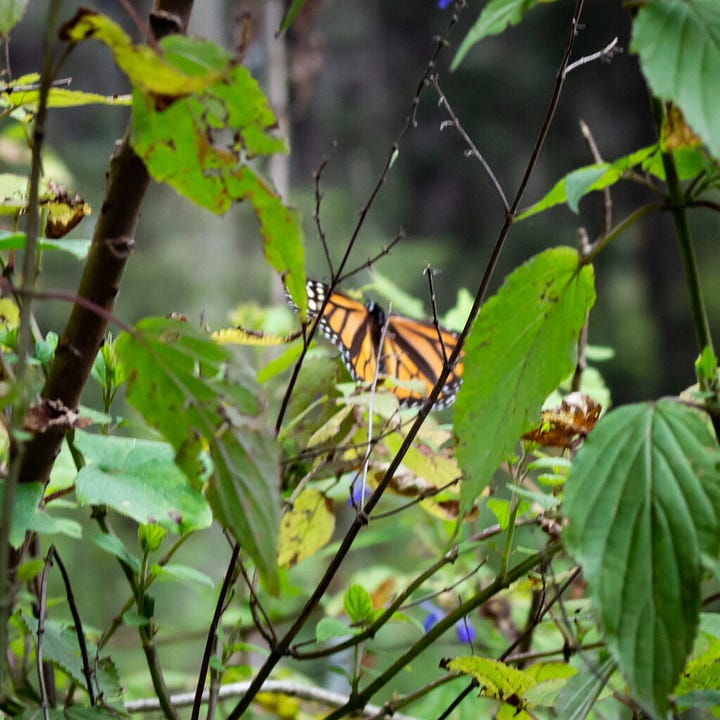
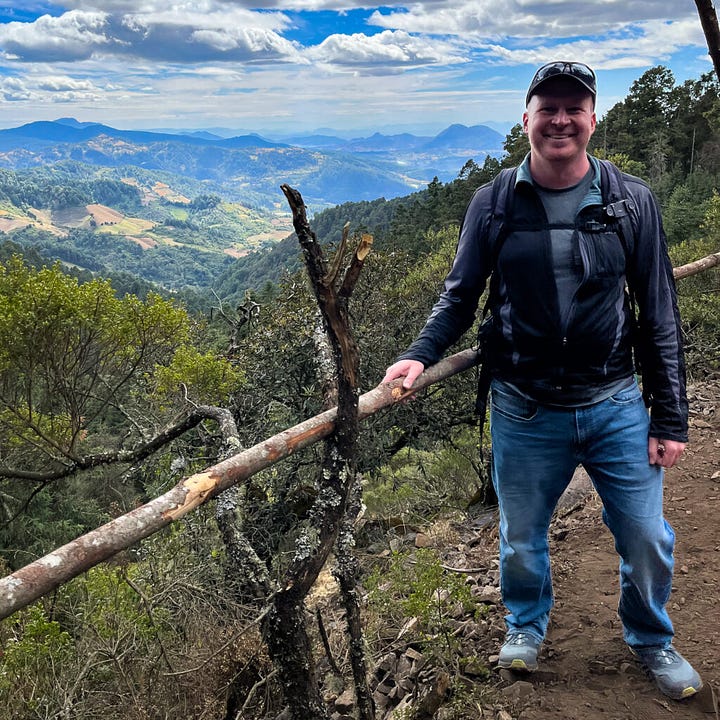
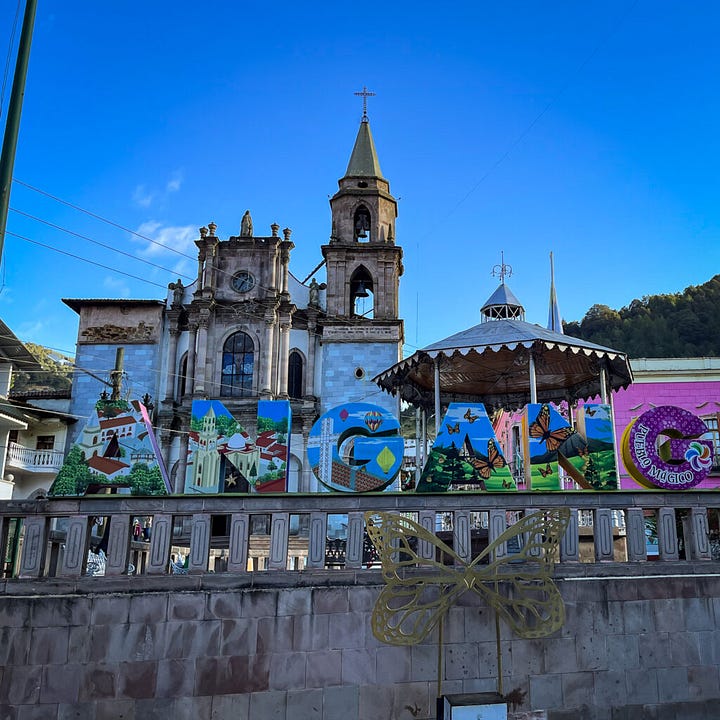
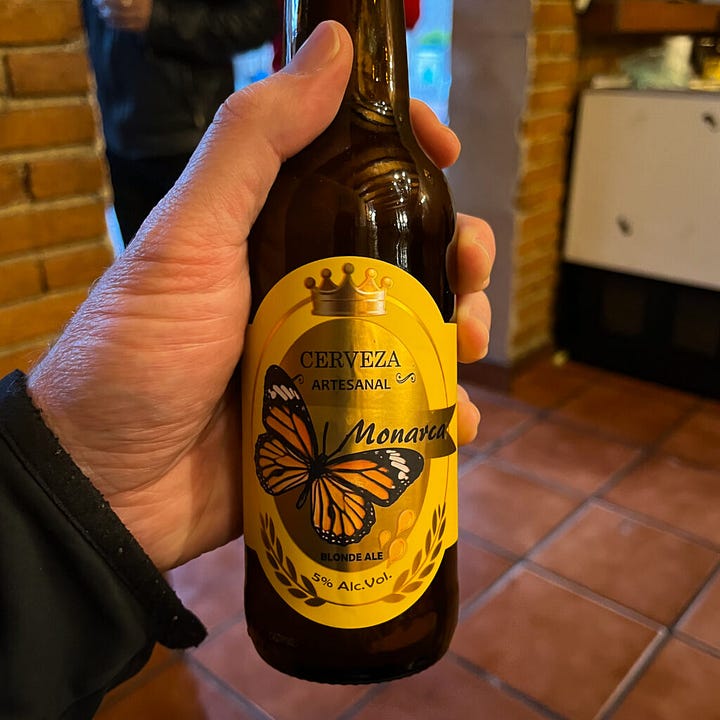
When we got to the parking lot, even more of them went flying by the car. They continued passing by us as we drove out of the park.





